If you have been into fitness for decades or are just getting started, it won’t take long for you to stumble across the fitness community that is CrossFit. With elite-level athletes performing on professional stages to the tune of, what some might call peak body images, it is no wonder why so many want to join the CrossFit model and try out beginner CrossFit workouts.
Time and time again, the average gym-goer will find themselves getting stuck in the same sort of fitness “workout rut.” They go to the same class, do the same routine, hop on the same cardio machine, maybe do a little calisthenics, or do the same treadmill workout. This generally leads to frustration, burnout, or hitting a fitness plateau. Instead, one of the best ways to take your
CrossFit is not just a type of workout. It has a cult-like following; it is a lifestyle. It offers a different take on the concept of fitness, designed to support you with community workouts and prevent plateaus thanks to varied movements. After your first CrossFit workout, you’ll understand the need to tell people. Here’s what you need to know about this workout movement.
What is CrossFit?
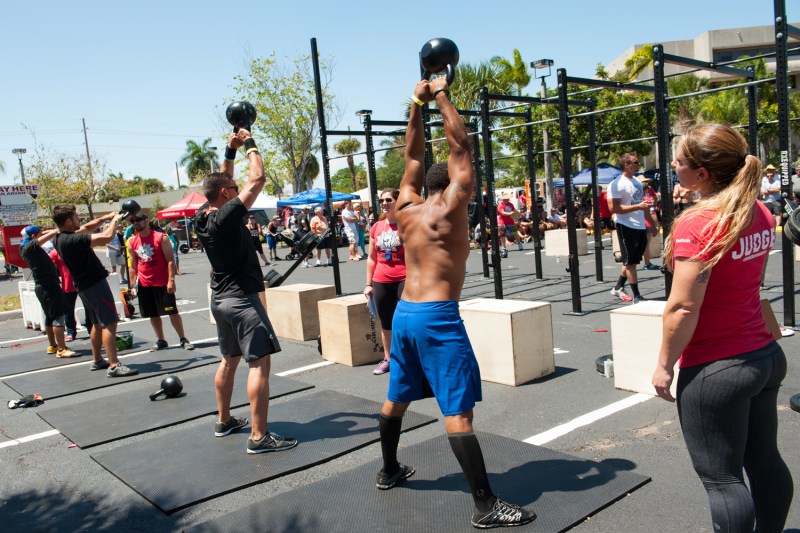
CrossFit is a branded fitness regimen consisting of functional and constantly varied movements performed at high intensity created by Greg Glassman. But what does that mean?
Functional movements are movements you perform every day — lifting objects, squatting, jumping, or stretching exercises. A CrossFit workout takes these everyday movements and leverages them for a workout by adding higher weights, faster movements, or longer distances.
The idea is to increase the overall power necessary to perform these movements. They build muscle and strength. They improve flexibility. They increase stamina. CrossFit is designed to fit everyone’s ability level, and the process is simple. Each day, there is a prescribed workout complete with modifications for ability level. Everyone in “the box,” aka the gym, completes the same workout. There are even kids’ classes to help adolescents build strength, balance, and endurance.
Another common element of CrossFit is the spirit of friendly competition. The workout is built for community and often uses competitions, scoreboards or leader boards, and even social media shoutouts to keep members motivated and interested.
What are the benefits of CrossFit?
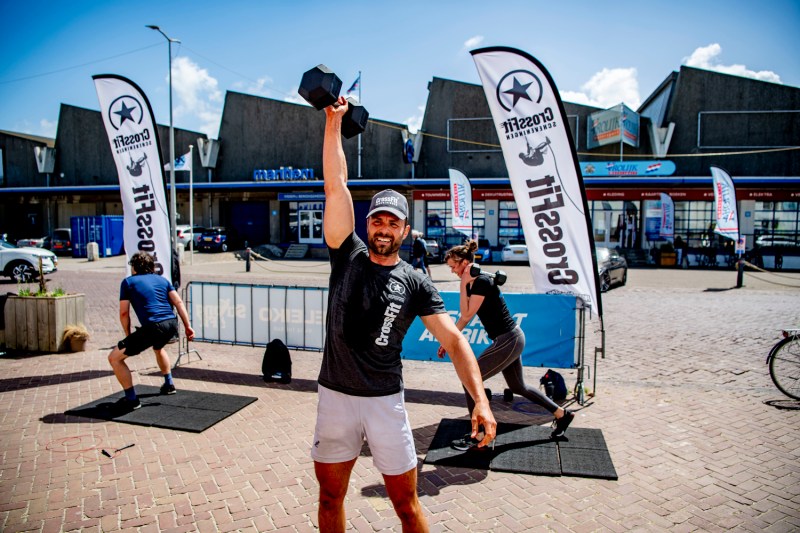
CrossFit is a high-intensity workout combined with function. These movements build strength and endurance, but they have practical applications within your everyday life. People often get into working out just to improve their appearance, but workouts are more than just repetitive gym movements.
As we age, our ability to support ourselves through activities needed in everyday life — think getting off the floor from a sitting position or carrying something from one place to another — decreases without some form of support. You might be lifting a tire in a CrossFit exercise, but the real purpose is to easily lift your child or carry in all the grocery bags to avoid the dreaded second trip.
CrossFit gyms and trainers are not franchisees; they’re affiliates. That means that while workouts tend to follow a pattern, each gym adds its own personality to the workout. They’re typically an hour long and follow four activities as a pattern. There’s a warmup, a strength or skill, the workout of the day, and the cool down.
For some people, this is a welcome change from long-form workouts. Many CrossFit workout sections last for just 10 minutes, providing the variety you need to keep the workout exciting.
What are the downsides of CrossFit?
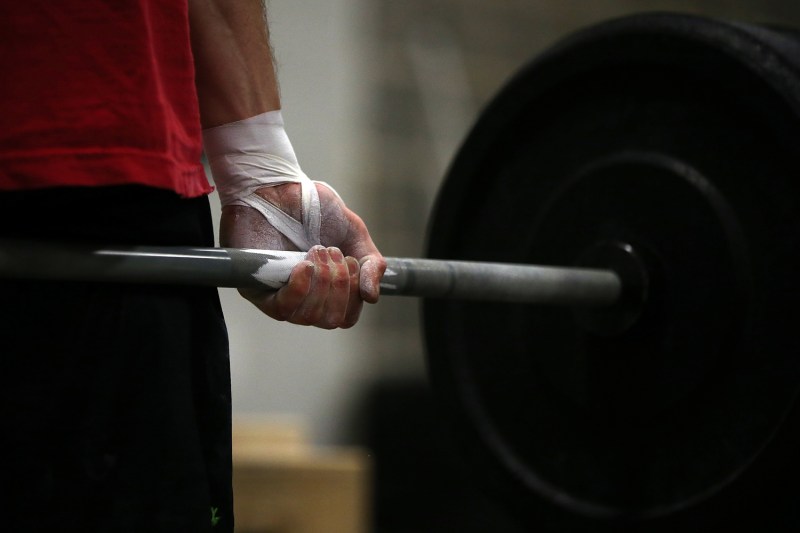
As with any workout, there are risks of injury. CrossFit has a reputation for causing gruesome injuries and issues, but empirical evidence doesn’t support the idea that it happens more in CrossFit than in any other high-intensity workout.
According to one study, around 20% of participants would end with an injury during a CrossFit workout. Researchers believe this has something to do with participants getting tired and losing the proper form.
To avoid injury, you can follow these precautions:
- Check your form: The workouts are designed to do specific things. If you’re shifting your weight because you cannot support it or you’re altering your steps because you’re tired, that’s when injury will likely occur. Pay especially close attention to your back and your knees during any workout.
- Listen to your body: If you’re the type to push yourself beyond your natural boundaries, you’ll want to be especially careful during CrossFit. These movements mimic what you do in your everyday life, but pushing yourself too far, too fast, or too much will increase your chances of injury.
- Choose the right gym: Since different CrossFit gyms have their own personalities, you’ll want to give different gyms a chance. Look for a gym with experienced trainers and a well-regarded reputation so that you get workout direction from someone who knows what they’re doing.
How do I start with CrossFit?
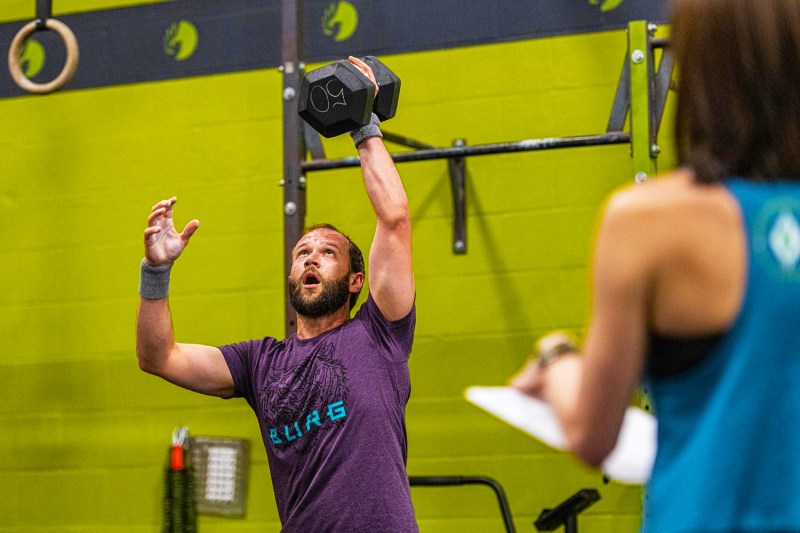
Look for a beginner’s class if this is your first experience with CrossFit. Even if you’re a seasoned athlete or have been working out for a long time, this type of workout is probably different than what you’re used to.
Beginner’s workouts give you a feeling for how the workout will go, but thanks to modifications, you’ll still get the workout you’re craving. Communicate with the instructor about any limitations or concerns you may have to ensure you have a safer workout.
If you’re a workout beginner in general, CrossFit does offer plenty of options for this segment. You’ll have access to workouts that help you build strength and ensure that you work towards your goals. It’s best to start with just two to three workouts per week at the most until you’ve gained your footing within the workout space.
What gear do I need?
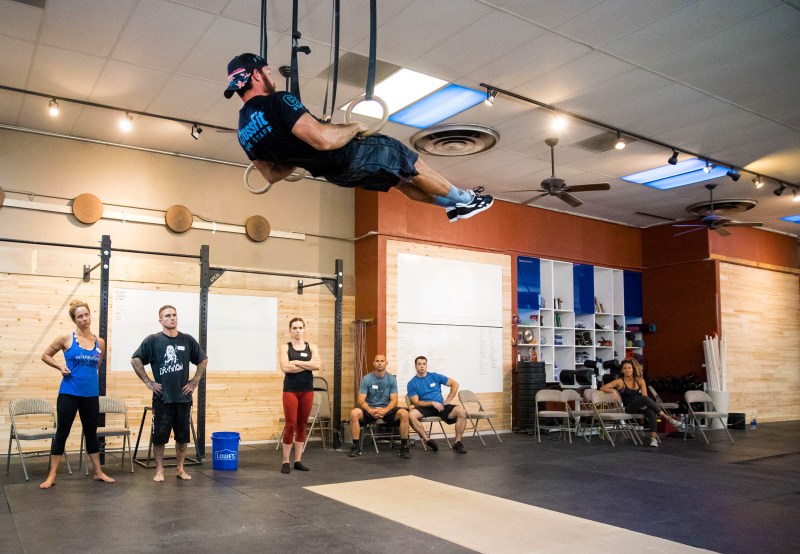
A good CrossFit shoe is a necessity if you’ve fallen in love with the workout method. These shoes are heavier than the average running shoe and offer a broader base to increase your balance. They also provide more protection for the top of your foot and toes, a nice thing to have with all the heavy objects you’ll use during a workout.
If you’re just trying CrossFit out, you don’t need anything different from your standard running shoe. Plus, all the equipment you’ll need is present at the gym where you’ll do your working out. It’s a relatively easy workout to get started with.
Infamous beginner CrossFit workouts
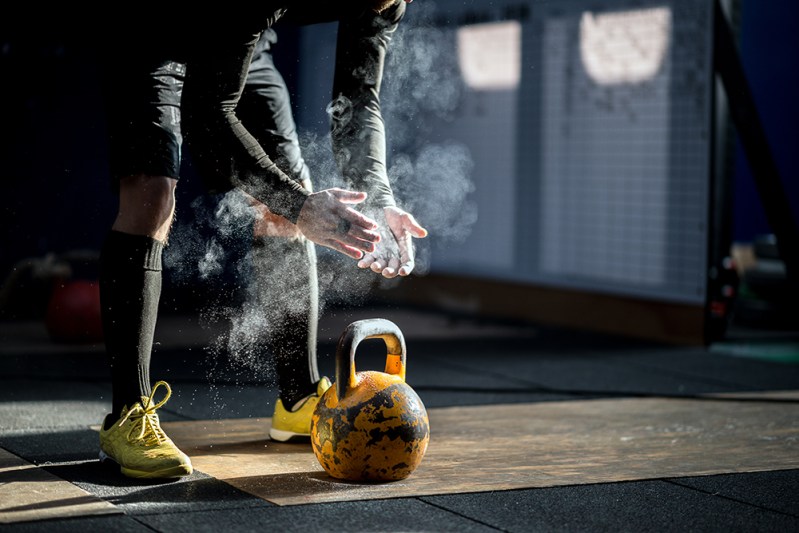
While it may be slightly misleading, to use the term beginner crossfit workouts is something of a catch-22. What exactly defines what a beginner’s workout is for any type of workout style? That it is easier, low-impact, or only involves a few exercises? What one person would define as a beginner workout may be completely the opposite of someone else. So while this may be somewhat of a misnomer, here are some infamous CrossFit workouts that you will definitely come across in your CrossFit career.
Murph WOD: (Completed for time)
- One-mile run
- Pull-ups, 100 reps
- Push-ups, 200 reps
- Air squats, 300 reps
- One-mile run
- All completed while wearing a 20lbs. vest
DT
- Deadlift, 12 reps (155 pounds for men/105 pounds for women)
- Hang power cleans, nine reps
- Push jerks, six reps
Repeat for five rounds with no rest (or minimal).
Fran
- Thrusters, 21 reps (95/65)
- Pull-ups, 21 reps
- Repeat
After the first set, the reps drop to 15 for each, and then, for the final round, nine reps, with no rest between.
So, while all levels of CrossFit athletes can complete the above workouts, it’s more so a matter of how fast or hard you push yourself that should be your overall goal. All it really takes is a willingness to try.
Trying out CrossFit
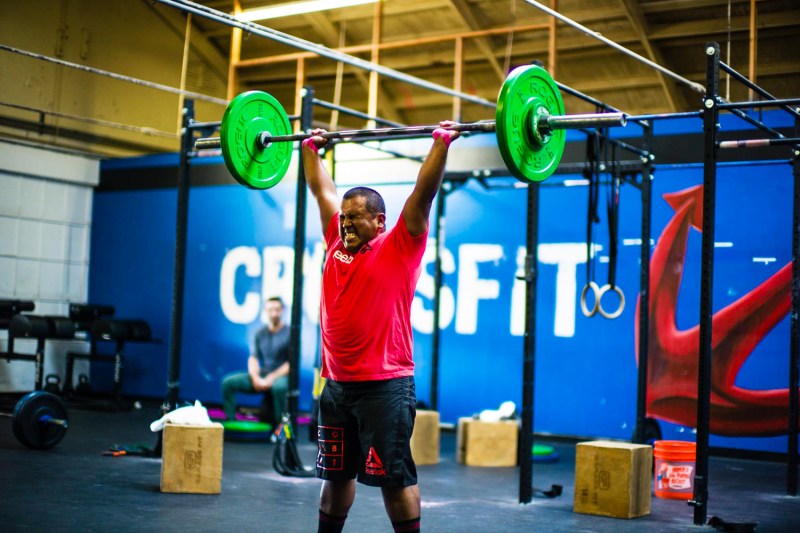
The principles of CrossFit are designed to help you perform everyday movements with greater strength and stability. The unique workout helps stave off boredom and inspires a devoted following from people who’ve come to love the sequences.
It offers a great alternative to traditional workouts and may help you get over your plateau thanks to the varied movements and high intensity. It’s a fascinating take on the concept of working out, and everyone should try it at least once.



